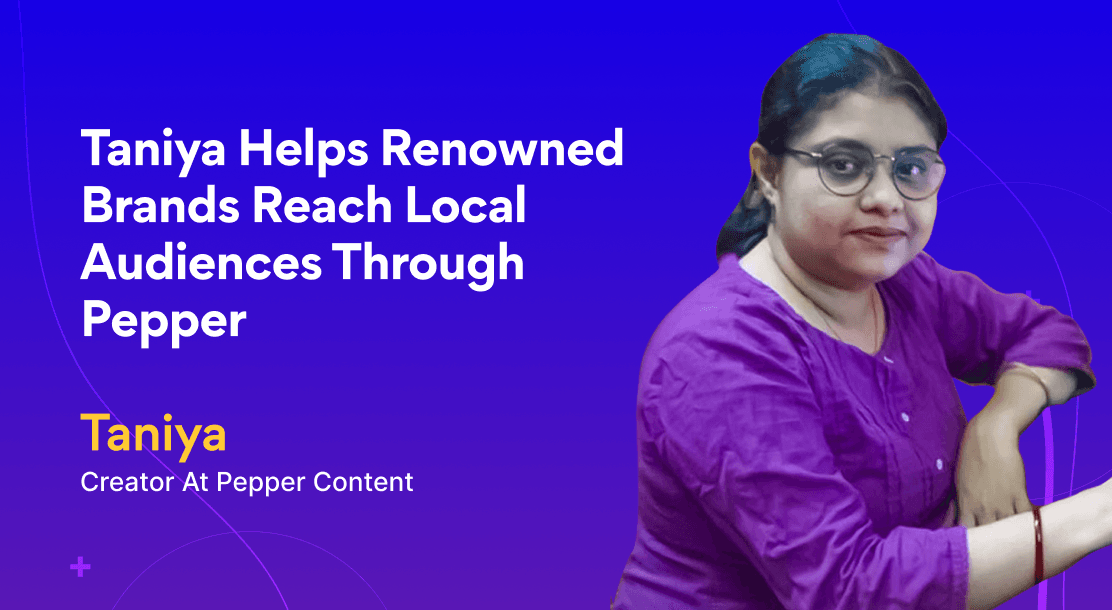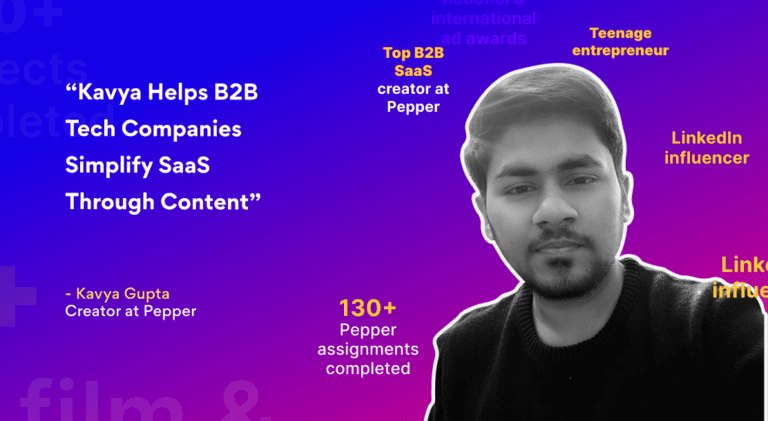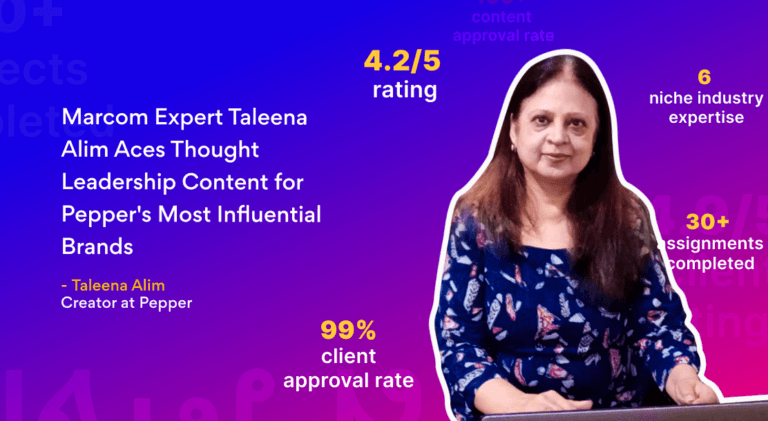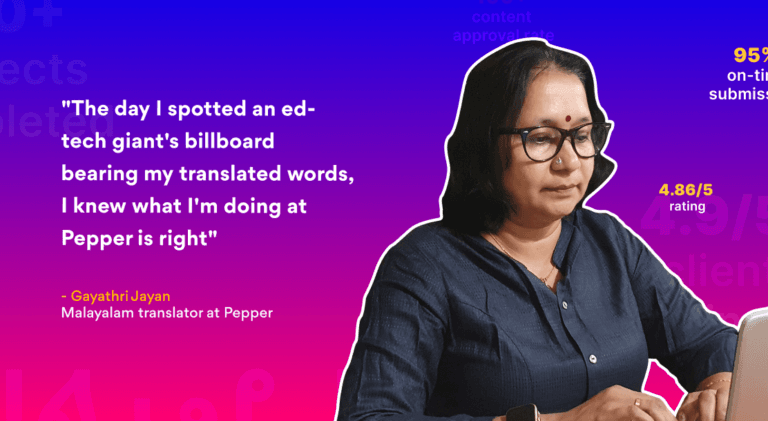Taniya Helps Renowned Brands Reach Local Audiences Through Pepper

Bengali is the fifth most-spoken language in the world, with approximately 300 million native speakers. Taniya is a Bengali translator, with over nine years of experience under her belt.
She started her career as a back-office operator in a logistics company, and took to freelance translation in 2012-13. Taniya helps brands reach their target geographies through colloquially translated content. She is adept at retaining the tone, style, and context of marketing communication in native languages.
“We, as Bengalis, seldom understand Hindi or English accurately. Definitely not in the same essence. Local languages such as Bengali aren’t mainstream. But marketers need to reach every person. So, authentic translation and transcreation have become the need of the hour,”
Why Translation Is Important for Hyper-Local Reach
Taniya believes translation is helping rapid audience growth for several industries. She cites show business as an example of industries where subtitle translation is instrumental in penetrating the local markets of India.
“Almost everyone enjoys consuming entertainment. But for local language speakers, the experience may not be the same in mainstream languages like English. So, brands need to invest in translation to connect with all their viewers at a personal level,” she adds.

Her Tryst With Translation
Taniya is a science graduate, so she spent a lot of time reading academic books in Bengali. “I wanted to explore Bengali at a deeper level. So, I joined a foundation, which develops different kinds of Bengali word games (they’ve even worked with Facebook.) My time there stimulated my interest in the language further,” she explains.
Taniya then decided to take up a course to understand the core of the language. She had a paper on English-to-Bengali translation, which she passed with flying colors. This built her
confidence in her abilities as a translator. Cut to today, she is skilled in translation, transcription, subtitling, and transcreation across various industries.
Initially, she promoted her services on her Facebook page “Horof-হরf” (meaning “fonts” in English). She would post about all the translation projects she was working on at the time. “The people who knew me saw my work and reached out for small projects. Then I found other clients through referrals,” Taniya says.
Why Translation Is Integral to Marketing
Taniya reflects on the developments that have taken place in the field in the last decade. She believes the advent of digitization—especially social media platforms—has triggered the need for catering to a global audience. So, companies are directing their efforts towards localization and transcreation.
“Even though the demand is there, there is a dearth of skilled translators. Many translators I know are good only with literal translation, but don’t do well with localization, which is often used in marketing,”
While machine translation is a revolutionary step, Taniya believes it’s not yet sophisticated enough to catch the finer nuances of a language. Therefore, she sees ample opportunity for human translators in the coming years.
Translating for Pepper
Taniya learned about Pepper Content through LinkedIn and applied as a creator. Her experience in translation added great value to our community of creators. “I take up other freelance projects from time to time, but Pepper is a constant,” she says.
She appreciates how Pepper keeps the content briefs clear and concise. She considers it the most organized platform she has worked with so far. At Pepper, she has created content for some of the most renowned brands out there, ranging from FMCG brands and food delivery apps to insurance and medi-claim providers. She has also freelanced with some of our favorite payment and online shopping apps independently.
According to Taniya, a crucial part of the translation process is to understand the core of every brand and its target audience. “I try to get a grip on what a company stands for and its brand voice by looking at its website and socials,” she elaborates.

Challenges She Grappled With
Taniya recalls how her spoken English wasn’t too good a few years ago. “I started watching English cartoons, ads, and reality shows to get a grasp of the language,” she says, while tracing her journey.
According to Taniya, the main challenge in translating from English to Bengali or any other language is maintaining the colloquialism. In essence, colloquialism is a feature denoting informality in language, which can help people relate to it better. “Every language has a literal and colloquial translation. If I use complex words in a document, the layperson will not understand it. So, a literal translation may not always be fruitful,” she explains.
Her Two Cents on Translation
Taniya believes translators should first get a feel of the language and content they’re translating. It will help them understand the product/brand better, and result in a more accurate outcome.
“If you’re a beginner, your native language or any language you are comfortable with is a good place to start. Read content in both the source and target languages. It will help you switch from one language to another smoothly,”
We enable creators like Taniya to turn their love for native languages into a profession. There are many talented multilingual translators at Pepper who help global brands reach customers across geographies. Not only that, but we’re also always looking for budding translators to join our team.
Latest Blogs
In this blog, explore the golden rules of using AI marketing tools so you can leverage the benefits to their maximum potential.
In this blog, you’ll learn how to avoid the pitfalls of SEO over-optimization while enhancing your site’s performance.
In this article, we’ll take a look at what AMP is, its advantages and disadvantages, and how it affects SEO.
Get your hands on the latest news!
Similar Posts

Content Creators
4 mins read
Kavya Helps B2B Tech Companies Simplify SaaS Through Content

Content Creators
4 mins read
Marcom Expert Taleena Alim Helps Brands With Winning Thought Leadership Content

Content Creators
4 mins read